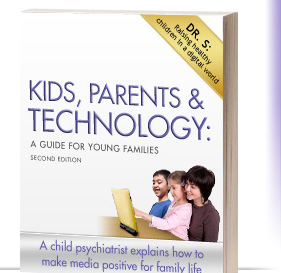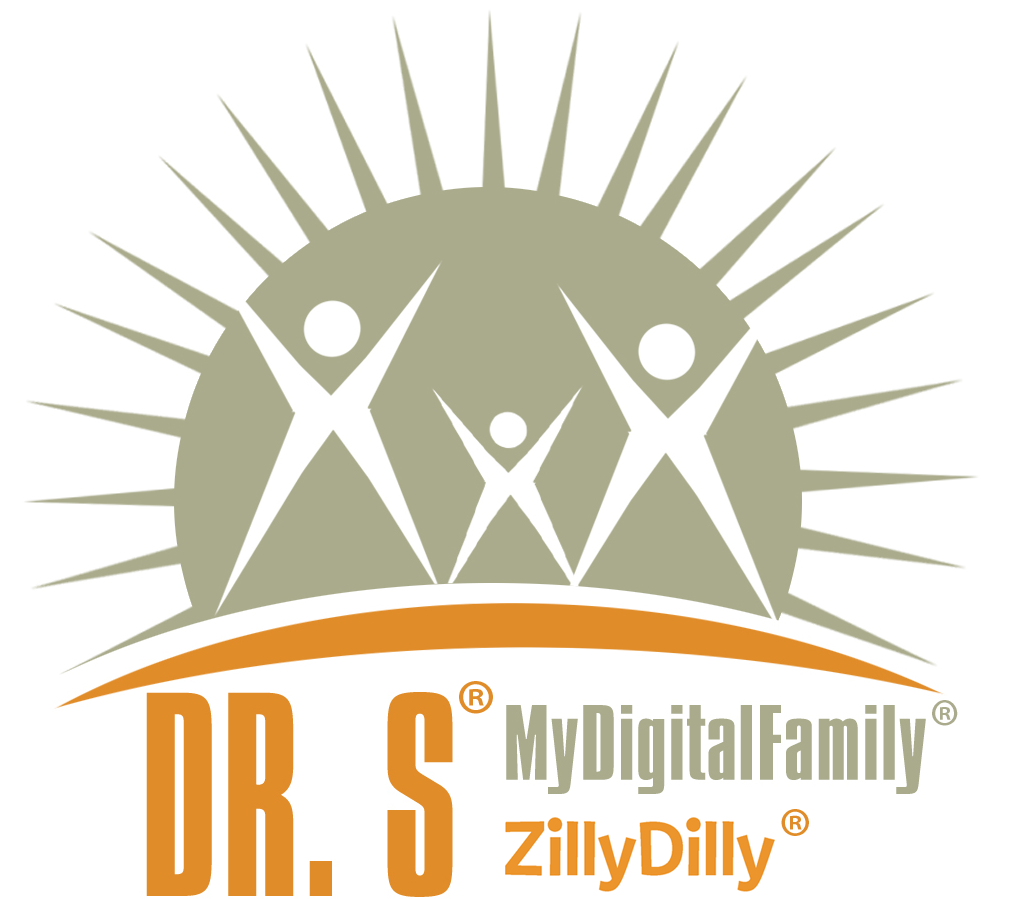Our National Institutes of Mental Health became the most important international neuroscience resource as research and training blossomed in psychiatry departments in medical schools the world over until the early 1980’s. Many psychiatrists and scientists trained in such programs, which always contained heavy emphases on “talk therapy” language and play (language in action) therapy with children. Basically, this training was in applied neuroscience.
In fact, in recent years, energized by Columbia University’s psychoanalyst / neuroscientist Dr. Eric Kandel’s Nobel Prize winning findings several decades ago, neuroscience soon exploded when technology gave it the tools. Dr. Kandel demonstrated that relevant environmental events can cause a physical alteration in brain structure and function we otherwise call learning. Learning is in fact brain changes visible under the microscope.
This bears repeating: Learning IS physical brain changes AND NOT “brain changes are caused by learning.” And psychotherapy IS learning…and IS brain changes too (the therapy happens in the patient, as every psychiatrist has to know, just as the sale happens in the buyer, as every good salesman knows). Psychotherapy – a blend of emotional and intellectual learning that often enhances brain maturation – needs nuanced language to fine tune judgement and social behavior. So brain changes need language to fine tune judgement and social behavior. Compared to medications, brain changes from language-based therapies can be more targeted and relatively free of unwanted effects.
Thus was the mind / brain duality finally breached by Dr. Kandel. Serious mental health professionals and scholars are now justifiably excited about repeated brain type confirmations of clinical wisdom about the mind part of the mind / brain entity accumulated over the past 120 years. American psychiatrists are scholarly leaders in current neuroscience research, especially brain functioning and its applications in the diagnoses and treatments of the mentally ill.
Neuroscience is the basic science of psychiatry. Today’s psychiatric practice is to neuroscience as, say, chemical engineering is to chemistry in a humane medical context.
Technology now allows us to co-relate very limited aspects of brain and mind. But let us remember a significant limitation. Knowing how muscles and bones make movement does not get us anywhere near explaining the wondrous art of the piano, ballet, or gymnastic performer. Or superb knowledge of telephony or computer science does not bring understanding of the rich language-based communication and information handled by the machines. (But this type of knowledge does help us understand and “fix” broken “brains” and minds and substantially help people.)
As a clinician, I have been thinking actively and using what is known about the mind / brain for almost fifty years each time I interact with a patient through language and offer medications, which makes me a neuroscience engineer.
While we all hope that the most impactful medical value of neuroscience will come soon to prevent, diagnose, and treat people with mental illness, it is also already bringing wonderful new opportunities in education, child development, and even law. Neuroscience is way more significant than its current faddish brain training sideshow.
For example, neuroscience shows that the elderly playing some videogames slow down the aging process of their brains. Dementia is slowed in the elderly by greater exercise of their mind / brains in an engaging everyday life. The declining brain thrives on exercising its highest functions, including language.
So, this suggests that we must also challenge our kids’ brains and minds well with disciplined language and its uses in math, social studies, and science. Let’s show them the best of esthetics in poetry, music, dance, and painting, etc. if we want to develop their mind / brains and whet their appetites for more of these truly effective brain foods.
IMHO, the power of placebos and healing relationships are still understudied in neuroscience (Louis Lasagne, M.D. and Jerome Frank, M.D., Ph.D , were among my most memorable and wisest teachers). Placebos were always powerful medicines. Great physicians from antiquity recognized the power of hope in healing. Hope works wonders, as does great advertising and great leadership. And that too is probably wired into our brains (as are trust and faith and love). But you must access hope through language and mind.
One final opinion: I firmly believe that the actual form and contents of the creative living brain’s nuanced complexity will always, if not for a very long time, remain awesomely mysterious, and its ever changing, shimmering gossamer (Dr. Penfield’s description, I think) a totality and elegance unexplainable.
Language, supported by its biological infrastructures interacting with environment, is the human mind / brain’s main function, and a royal road to understanding its workings. It is essential to understanding individual people’s minds and connecting with them across space and time.
Paradoxically, at the very same time that neuroscience is confirming the biological bases of much what we have learned clinically about the human mind in language-based therapies in the past century, actual American psychiatric practice in most areas away from rare metropolitan pockets is rapidly drifting too far away from its intelligent, disciplined, humanistic, mindful, language-based roots bridging the mind and brain. This trend is especially true of inpatient and outpatient care reimbursed by Medicaid and Medicare on behalf of poor people who are mentally ill.



Neuroscience and Psychiatry: The Roots of Humane Mental Health Care
Originally published by ThinkerMedia: BestThinking.com on December 15, 2013
I have a mind, therefore I am: psychiatry bridges neuroscience, language, medicine, consciousness and daily life. Where is it heading?
Eitan D Schwarz MD DLAPA FAACAP
Clinical Assistant Professor Northwestern University School of Medicine
Skokie, IL
Article by Eitan ‘Dr. S®’ Schwarz, MD
©All rights reserved
These ideas are worth bearing in mind as parity for mental health coverage and major healthcare reform take us into uncharted waters.
Our brains give us language, and used expertly it can be an awesome neuroscience tool.
In fact, the profession that trained me — modern psychiatry — was first built on the careful and caring art of listening to speech and language in all their nuances and responding in kind as a central element of psychiatric practice. Medical and non-medical psychology pioneers have worked brilliantly and diligently for over a century to free the mentally ill from stigma and to understand and treat them humanely. These pioneers tried to base their practices on systematic notions of the brain / mind that made sense. They tried to infer brain function and structure from mental processes and behavior in the most humane ways — talking with and intensely and actively listening to patients.
Of course, psychoactive medications and other substances, their development, production, and consumption, and their side and main effects are our current industrial-scale neuroscience applications. These applications are still pretty crude, since we are unable to target specific brain functions without affecting others or the whole body. Nevertheless, we are able to remediate mood, anxiety, and thought disorders, and people do find relief from many very painful mental states. But it is not enough.
But, of course, we also already have language — highly refined tools to address specific functions of the brain with minimal side effects. We already have precise ways to effect specific changes in behavior, cognition, experience, and consciousness. Our brains are already hard wired to develop language to evolve us into self-aware humane creatures possessing powerful ways of monitoring, understanding, organizing, and managing ourselves in our world and of governing our bodies. And we are good at using it as a neuroplastic tool.
For ages, man has wondered about his mind: Where do his behavior, awareness, consciousness, cognition, identity, irrationality, and emotions originate and how are they all orchestrated? More recently, the mind had been understood to be connected with the brain, yet their relationship has remained a fascinating mystery. In the last few exciting decades, the traditional mind / brain duality has become less distinct as we are carefully unfolding the wonders of the brain. I have a brain, therefore I am. Here’s a brief overview:
Even before the awesome brain imaging technology we have today, neuroscience has interested humankind for generations as we have attempted to understand the mind in terms of its physical home base, the brain. In the 1930’s the Canadian neurosurgeon Dr. Wilder Penfield stimulated the living human brain directly in conscious people and elicited thoughts and images they described in language. Like the Italian Dr. Luigi Galvani’s electric stimulation of frog muscle tissues centuries earlier yielding movement, Dr. Penfield’s brain stimulation revealed the mind.
Earlier yet, in fact about 120 years ago, Austrian Dr. Sigmund Freud himself started his career in his new psychiatry as a neuroscientist with his “Project.” He wanted to understand the severely mentally ill, and tried to understand and treat inpatients with another physician, the Parisian Dr. Pierre Janet. Dr. Freud was first to predict the existence of neurotransmitters, the bases of currently the most developed aspect of neuroscience, psychopharmacology. He also predicted correctly that neurophysiologies of traumatic memories differ from “ordinary” memories. Dr. Freud essentially posited that raw love and aggression are built into basic brain wiring, but need refining, balancing, and development via childhood experiences, mediated largely by language. These were astounding speculations for his time, founding modern psychiatry on his conviction that mental health is rooted in science.
But he also understood that the science he knew was just the beginning of understanding people. Lacking the technology to continue his investigations on a neuronal level, he and his colleagues settled for the functional level. They struggled to picture and heal the mind/brain with careful observation and use of language-based data and behavior.
He brought the idea of the unconscious into the mainstream of Western thought, i.e. that most mind / brain activity is outside of our direct awareness. He also emphasized that language-based functions dominate when we address social and intellectual challenges. In part, his “making the unconscious conscious” means putting urges into words that can delay, encourage, or substitute for behaviors. Obviously, nuanced language and its myriad speech expressions provide the highest level of our intra-species interactions.
So the histories of psychiatry and its basic science, neuroscience, are intimately connected. Indeed, many of the pioneers of modern neuroscience were steeped in Freud’s psychoanalytic methods and teachings, and similarly became curious about the mind / brain connection.
For example Dr. Paul Schilder studied how our body image is produced in the brain, and his wife Loretta Bender MD and her outstanding colleague at Bellevue Hospital, Barbara Fish MD , tried desperately to understand and treat children severely ill with psychosis as suffering from brain disorders, even before we really understood the differences between autism and schizophrenia, and their papers show true wisdom about brain and mind development.
Our National Institutes of Mental Health became the most important international neuroscience resource as research and training blossomed in psychiatry departments in medical schools the world over until the early 1980’s. Many psychiatrists and scientists trained in such programs, which always contained heavy emphases on “talk therapy” language and play (language in action) therapy with children. Basically, this training was in applied neuroscience.
In fact, in recent years, energized by Columbia University’s psychoanalyst / neuroscientist Dr. Eric Kandel’s Nobel Prize winning findings several decades ago, neuroscience soon exploded when technology gave it the tools. Dr. Kandel demonstrated that relevant environmental events can cause a physical alteration in brain structure and function we otherwise call learning. Learning is in fact brain changes visible under the microscope.
This bears repeating: Learning IS physical brain changes AND NOT “brain changes are caused by learning.” And psychotherapy IS learning…and IS brain changes too (the therapy happens in the patient, as every psychiatrist has to know, just as the sale happens in the buyer, as every good salesman knows). Psychotherapy – a blend of emotional and intellectual learning that often enhances brain maturation – needs nuanced language to fine tune judgement and social behavior. So brain changes need language to fine tune judgement and social behavior. Compared to medications, brain changes from language-based therapies can be more targeted and relatively free of unwanted effects.
Thus was the mind / brain duality finally breached by Dr. Kandel. Serious mental health professionals and scholars are now justifiably excited about repeated brain type confirmations of clinical wisdom about the mind part of the mind / brain entity accumulated over the past 120 years. American psychiatrists are scholarly leaders in current neuroscience research, especially brain functioning and its applications in the diagnoses and treatments of the mentally ill.
Neuroscience is the basic science of psychiatry. Today’s psychiatric practice is to neuroscience as, say, chemical engineering is to chemistry in a humane medical context.
Technology now allows us to co-relate very limited aspects of brain and mind. But let us remember a significant limitation. Knowing how muscles and bones make movement does not get us anywhere near explaining the wondrous art of the piano, ballet, or gymnastic performer. Or superb knowledge of telephony or computer science does not bring understanding of the rich language-based communication and information handled by the machines. (But this type of knowledge does help us understand and “fix” broken “brains” and minds and substantially help people.)
As a clinician, I have been thinking actively and using what is known about the mind / brain for almost fifty years each time I interact with a patient through language and offer medications, which makes me a neuroscience engineer.
While we all hope that the most impactful medical value of neuroscience will come soon to prevent, diagnose, and treat people with mental illness, it is also already bringing wonderful new opportunities in education, child development, and even law. Neuroscience is way more significant than its current faddish brain training sideshow.
For example, neuroscience shows that the elderly playing some videogames slow down the aging process of their brains. Dementia is slowed in the elderly by greater exercise of their mind / brains in an engaging everyday life. The declining brain thrives on exercising its highest functions, including language.
So, this suggests that we must also challenge our kids’ brains and minds well with disciplined language and its uses in math, social studies, and science. Let’s show them the best of esthetics in poetry, music, dance, and painting, etc. if we want to develop their mind / brains and whet their appetites for more of these truly effective brain foods.
IMHO, the power of placebos and healing relationships are still understudied in neuroscience (Louis Lasagne, M.D. and Jerome Frank, M.D., Ph.D , were among my most memorable and wisest teachers). Placebos were always powerful medicines. Great physicians from antiquity recognized the power of hope in healing. Hope works wonders, as does great advertising and great leadership. And that too is probably wired into our brains (as are trust and faith and love). But you must access hope through language and mind.
One final opinion: I firmly believe that the actual form and contents of the creative living brain’s nuanced complexity will always, if not for a very long time, remain awesomely mysterious, and its ever changing, shimmering gossamer (Dr. Penfield’s description, I think) a totality and elegance unexplainable.
Language, supported by its biological infrastructures interacting with environment, is the human mind / brain’s main function, and a royal road to understanding its workings. It is essential to understanding individual people’s minds and connecting with them across space and time.
Paradoxically, at the very same time that neuroscience is confirming the biological bases of much what we have learned clinically about the human mind in language-based therapies in the past century, actual American psychiatric practice in most areas away from rare metropolitan pockets is rapidly drifting too far away from its intelligent, disciplined, humanistic, mindful, language-based roots bridging the mind and brain. This trend is especially true of inpatient and outpatient care reimbursed by Medicaid and Medicare on behalf of poor people who are mentally ill.
To learn about neuroscience and its applications today, Dr. Kandel and journalist Charlie Rose’s The Brain series is a unique resource.
http: